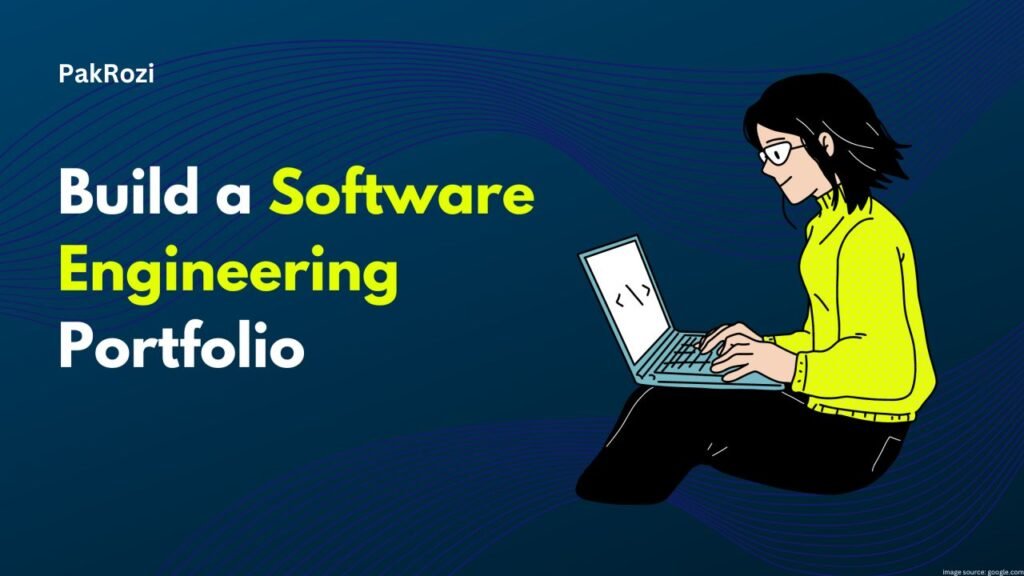A portfolio is the most important step that an Engineering Graduate has to showcase skills, projects, and capabilities in front of the potential employers. However, great portfolios do not just depict technical excellence, but also make one portray as a problem solver, creative, or even a team player. Now, see how one would make an impactful portfolio that would make their stand unique in the cutthroat marketplace.
Table of Contents

Professional Summary Introduction
Begin with a summary that captures your background, skillset, and career ambitions at the start of the portfolio. This would be the first quick catch on who you are and what you are aiming to do. Begin by outlining your chief engineering skills and interests.
- Include a brief outline of your area of specialization in engineering as well as your focus areas.
- Add one line of technical strengths and your vision for your career.
Academic Achievements
Educational highlight. Please list your achievements like: degree, certificates, notable academic achievements, etc. This section highlights that you are committed to the profession and eager to learn. Don’t forget to include any achievements that really distinguish you.
- Include honors, awards or scholarships awarded.
- Provide links to research papers, theses, or notable projects.
Your Technical Skills
List your technical skills clearly and categorically to demonstrate your proficiency in the use of Engineering tools, software, or any other related technology. Grouping them will make them readable, and besides, add your level of expertise for each.
- Try organizing your skills into sections such as “Software Tools” or “Programming.”
- Indicate your level of proficiency-for example, beginner, intermediate, or expert.
Real-World Projects
Discuss the projects you have undertaken in your class assignments or internships. Explain problems that you could solve, the technologies used, and the results achieved. Examples that happen in real life make your portfolio more relevant and believable.
- Use visual diagrams, screenshots, or photos for greater impact.
- Be sure to feature projects with strong challenges or innovative results.
Internships and Work Experience
Include information about internships or part-time jobs that you have worked in an area of Engineering. It would be impressive to the employer if you demonstrate learning experience, using your knowledge that you have successfully applied in the work environment. State the specific tasks performed, explaining how they contributed to the organization.
- Roles of Clearly describe each role undertaken and provide value that it delivered to the team.
- Technical or soft skills acquired during the above experiences.

Co-curricular Activities
Co-curricular activities: These reveal your well-round personality as well as an interesting aspect of Engineering besides studying. List hackathons, membership in a club, or volunteer work that will talk to your field.
- Talk about what leadership roles or team-based work you were part of.
- Note any awards or recognition associated with these efforts.
Demonstrate Examples of Problem-Solving
Employers like to see how you approach and solve engineering problems. Reflect on examples of complex challenges you’ve faced and describe methods used as well as results achieved. This is illustrative of critical thinking and creativity.
- Include examples for academic problem-solving cases as well as real-world cases.
- Focus on creative or effective solutions that you developed.
Testimonials and References
Now gather a few testimonials from professors, mentors, or even colleagues to vouch for your capabilities and professional standing. As a good reference leaves an indelible mark on the reader while reiterating the soundness of your credibility.
- Include quotes that reflect your technical or interpersonal strengths.
- If appropriate, include contact information for referees.
Online Portfolio
This is an excellent means of demonstrating your skills to a wide audience. The platform could be LinkedIn, GitHub, or your personal website but brings the portfolio out there and into the professional domain.
- Link to projects or research and code repositories.
- Update the content from time to time in order to reflect the latest work.
Focus on Design and Presentation
A portfolio by a professional needs to be in an organized manner and of aesthetic beauty. Make use of professional fonts along with consistent formatting and headings so that all this can be navigated easily. Keep it clean, simple, and clutter-free.
- Make it clickable to be interactive.
- Add some personal interest by including visuals in the form of charts or pictures in your portfolio.
Conclusion
A quality engineering portfolio will reflect one’s experience, passion, and expertise in the field. It ought to be kept updated with new projects, certifications, and achievements. Hence it will always be good to review the portfolio with mentors and peers to improve the quality. So, armed with a coherent and attractive portfolio, you’ll come out confidently presenting yourself as the crème of the crop within the engineering world.
FAQ’s
How to Build Portfolio for an Engineer?
A professional summary and rich project showcases, along with technical skills, are the must-included features in an engineering portfolio. It should further comprise work experiences, such as internships, as well as academic achievements and certifications. Then, it can be made online accessible to employers through platforms like GitHub or LinkedIn.
What Does a Portfolio Look Like?
Summary, skills, projects, and experience are typically the significant sections in a clean and streamlined engineering portfolio. It would feature visual elements and testimonials and attach other relevant links to one’s online profiles on GitHub or LinkedIn.
